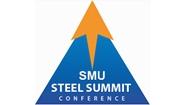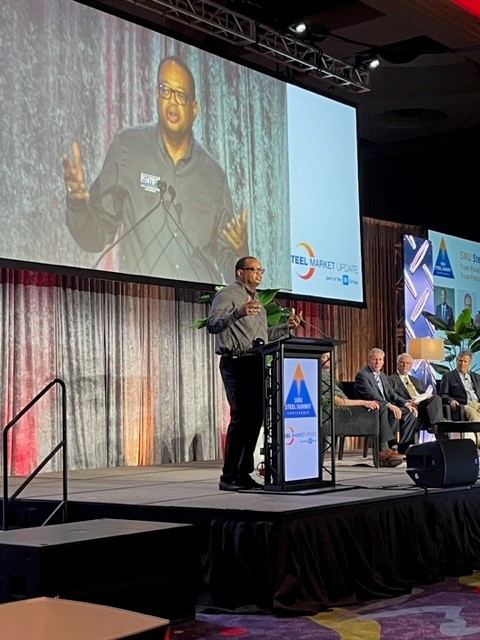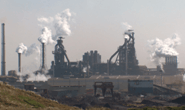Steel Products

Steel Summit: Trade Panel Discusses Decarbonization and Trade
Written by Becca Moczygemba
August 25, 2023
Steel Summit’s trade panel opened the conversation around the ongoing negotiations between the US and EU, decarbonization, and trade.

The panel consisted of the president of the Steel Manufacturers Association (SMA), Philip K. Bell; president of the American Iron and Steel Institute (AISI), Kevin Dempsey; trade attorney Lewis Leibowitz; and CSN’s executive director Jerry Richardson.
“Decarbonization has become a critical issue for the industry,” said Dempsey. “Traditionally at this conference, trade has been a big issue, and continues to be. Now, in addition to trade, we have the issue of decarbonization.”
The US is the lowest emission steel producer because our efficiency has led us there, rather than a government mandate, Dempsey added.
When asked what the outcome would be on the global arrangement on steel and aluminum between the US and EU by October, the panelists agreed that the US would likely not adopt a carbon credit program like that of the EU.
“Progress just isn’t being made at the office of the United States Trade Representative and the Commerce Department. I think it is due in large part to the fact that the EU is relying too heavily on their CBAM,” said Bell. Part of the EU CBAM policy (carbon border adjustment mechanism) is that you have to agree to it and must have something similar in your country to be a part of it, he continued.
“There won’t be a final agreement by October. I think that’s impossible,” said Leibowitz.
Leibowitz suggested that narrowing the differences and accommodating both systems, then subsequently using the International Trade Commission (ITC) study into greenhouse-gas emissions intensity to make a decision would be a favorable approach.
While we’ve seen the implementation of trade tariffs like Section 232 and antidumping and countervailing duties (ADD/CVD), panelists were asked about the likelihood of an additional tax.
There’s not as much steel exposed to Section 232 as you would think, said Richardson. It’s estimated that about 20-30% of steel is subject to Section 232 tariffs.
Richardson highlighted the necessity of imports, saying the domestic industry does not produce enough to meet demand.
Want more of the discussion? Join us at Tampa Steel, Jan. 28-30, 2024. Click here to register!

Becca Moczygemba
Read more from Becca MoczygembaLatest in Steel Products
CRU: Excessive global supply could hit rebar mill investments in US
Following the onset of the war in Ukraine in March 2022, concerns about import availability and expectations of rising demand from President Biden’s Infrastructure Bill pushed US rebar prices to record highs. In response, a flurry of new mills and capacity expansions were announced to meet the rise in demand from growth in the construction […]

Steel buyer spirits tempered by soft spot market conditions
Steel sheet buyers report feeling bogged down by the ongoing stresses of stagnant demand, news fatigue, tariff negotiations or implementation timelines, and persistent macroeconomic uncertainty.

CRU: US stainless prices to rise on expanded S232 tariffs
Stainless prices in the US market will rise, following price increases by major US producers. Our base case scenario incorporates higher US prices in the near term, despite the initial negative reaction by the market. US stainless prices will go up in 2025 H2 and will stay elevated in 2026 as tariffs on stainless […]

Galvanized steel demand unsteady amid lingering buyer fatigue: HARDI
Uneven demand for galvanized steel in June reflects a market that remains mired in uncertainty, according to industry sources.

OCTG industry salutes Customs for catching trade crooks
The US OCTG Manufacturers Association is commending US Customs for intercepting another Thai company's attempt to illegally transship Chinese oil pipe to the US.
